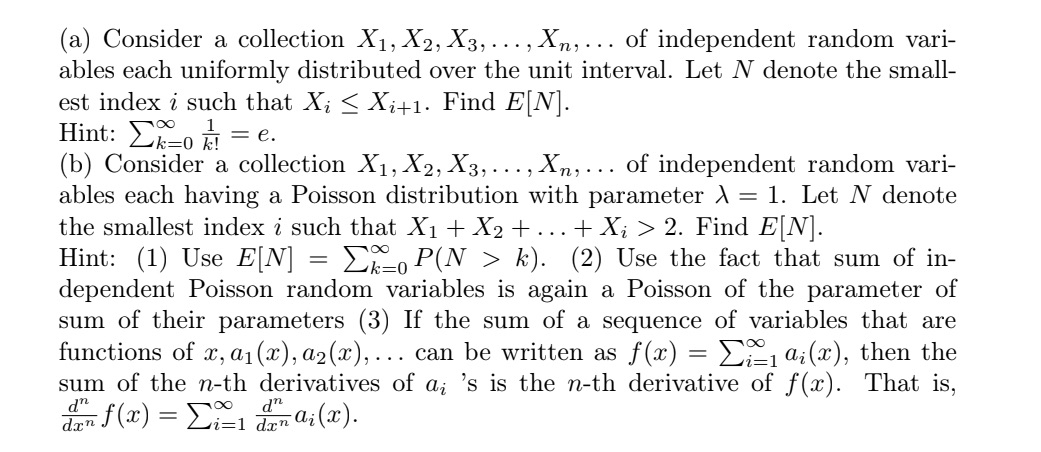Answered step by step
Verified Expert Solution
Question
1 Approved Answer
(a) Consider a collection X1, X2, X3, . Xn,... of independent random vari- ables each uniformly distributed over the unit interval. Let N denote

(a) Consider a collection X1, X2, X3, . Xn,... of independent random vari- ables each uniformly distributed over the unit interval. Let N denote the small- est index i such that Xi Xi+1. Find E[N]. Hint: 1 = e. (b) Consider a collection X1, X2, X3, . . ., Xn, ... of independent random vari- ables each having a Poisson distribution with parameter \ = 1. Let N denote the smallest index i such that X + X2 + . . . + Xi > 2. Find E[N]. = Hint: (1) Use E[N] P(N > k). (2) Use the fact that sum of in- dependent Poisson random variables is again a Poisson of the parameter of sum of their parameters (3) If the sum of a sequence of variables that are functions of x, a1(x), a2(x),... can be written as f(x) = i ai(x), then the sum of the n-th derivatives of a 's is the n-th derivative of f(x). That is, dann f(x) ;(x). =
Step by Step Solution
There are 3 Steps involved in it
Step: 1

Get Instant Access to Expert-Tailored Solutions
See step-by-step solutions with expert insights and AI powered tools for academic success
Step: 2

Step: 3

Ace Your Homework with AI
Get the answers you need in no time with our AI-driven, step-by-step assistance
Get Started


